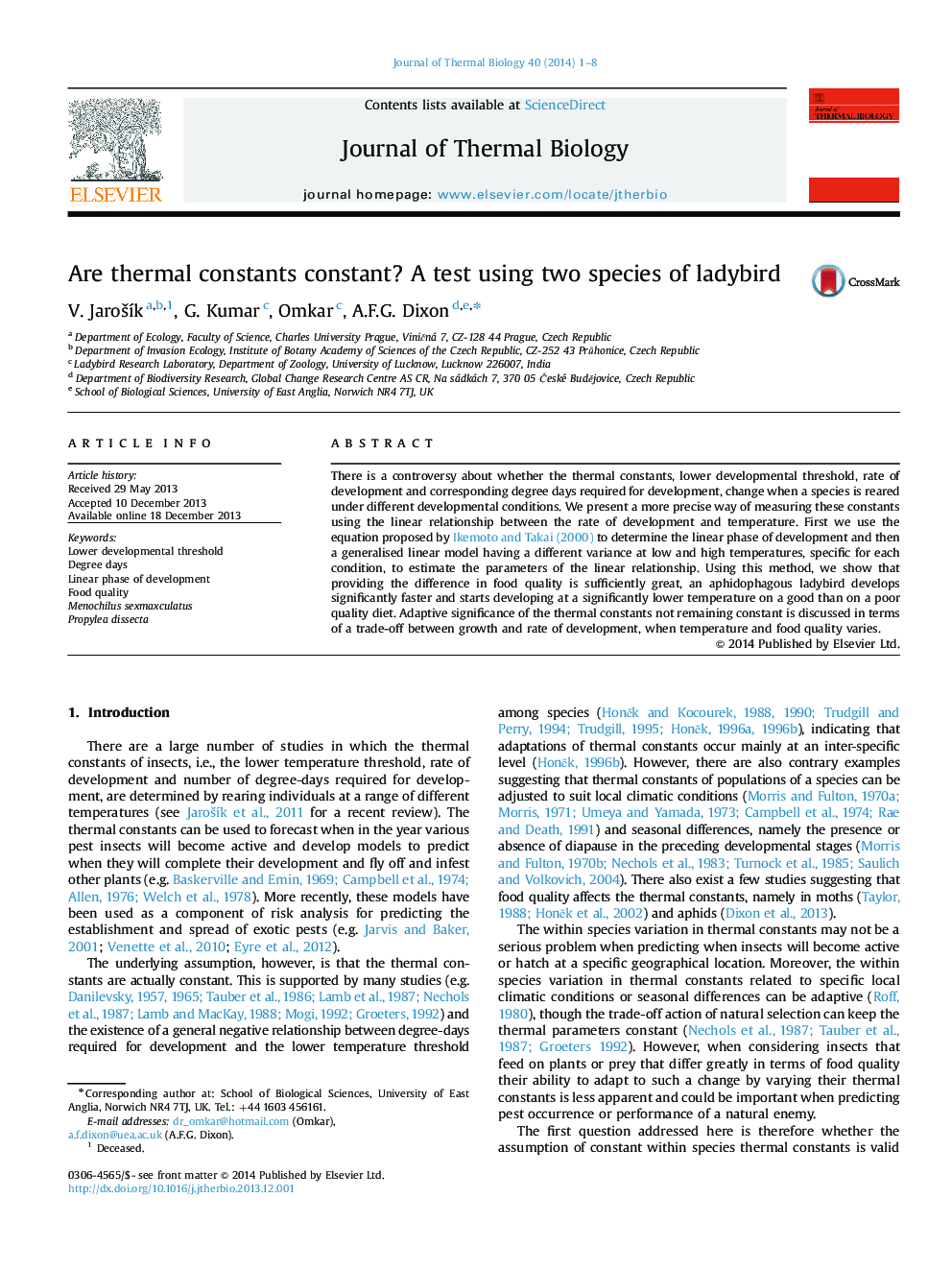| Article ID | Journal | Published Year | Pages | File Type |
|---|---|---|---|---|
| 2842974 | Journal of Thermal Biology | 2014 | 8 Pages |
•We present a more precise way of measuring the developmental thermal constants.•We show that thermal constants are not constant.•Development is faster and starts at a lower temperature on a good quality diet.•This finding indicates an important trade-off between growth and rate of development.•It can also have practical consequences when using phenological models.
There is a controversy about whether the thermal constants, lower developmental threshold, rate of development and corresponding degree days required for development, change when a species is reared under different developmental conditions. We present a more precise way of measuring these constants using the linear relationship between the rate of development and temperature. First we use the equation proposed by Ikemoto and Takai (2000) to determine the linear phase of development and then a generalised linear model having a different variance at low and high temperatures, specific for each condition, to estimate the parameters of the linear relationship. Using this method, we show that providing the difference in food quality is sufficiently great, an aphidophagous ladybird develops significantly faster and starts developing at a significantly lower temperature on a good than on a poor quality diet. Adaptive significance of the thermal constants not remaining constant is discussed in terms of a trade-off between growth and rate of development, when temperature and food quality varies.
